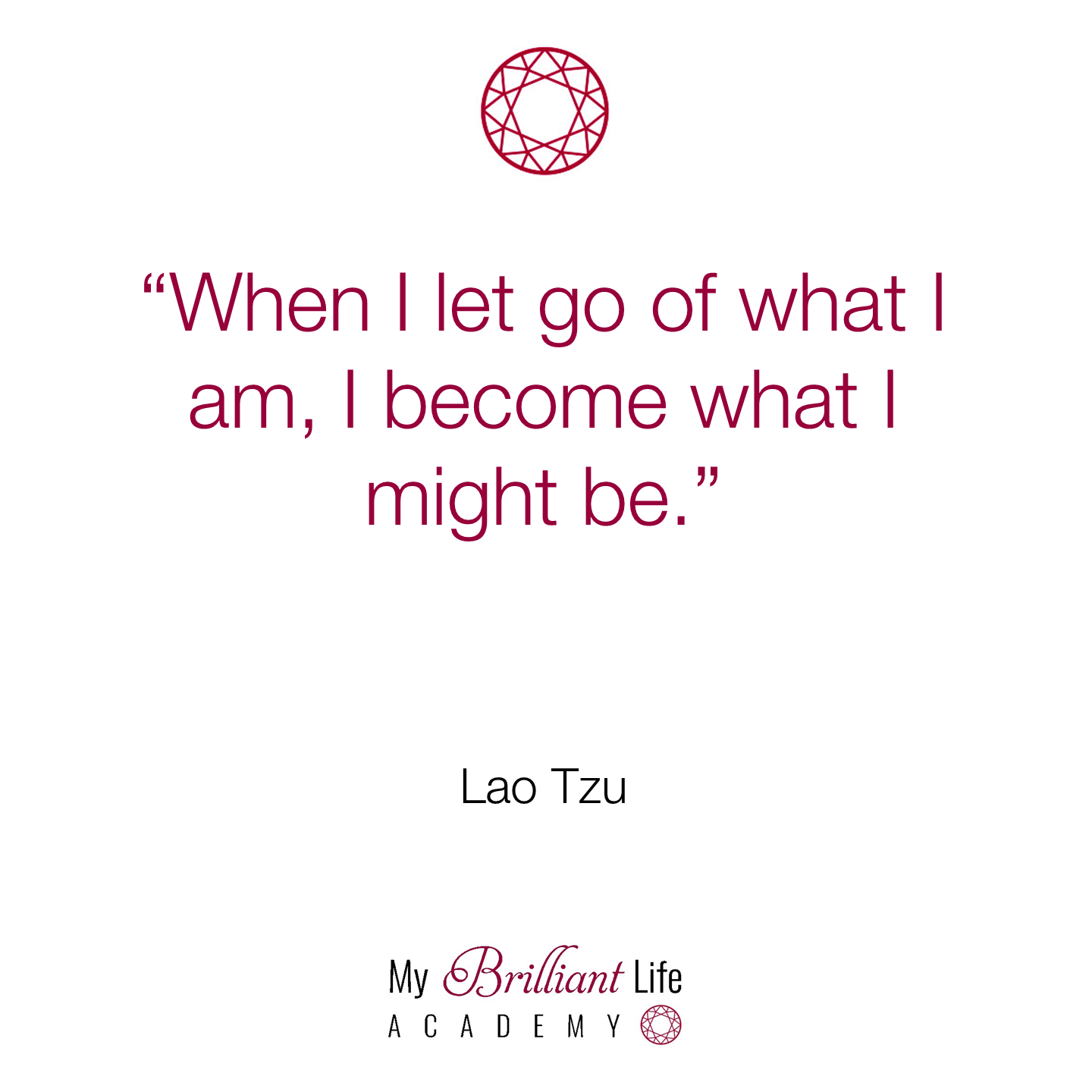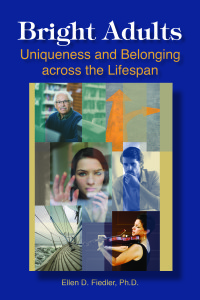If you are on a quest to exploring the concepts of giftedness and extra intelligence, you might want to buy the Book Bright Adults by Ellen Fiedler. She talks about how the phases of life are different for Bright People and how to navigate them best.
Maybe you recently stumbled upon the concept (and reality) of giftedness because your kid got tested, or a friend made a remark that it could be something you should investigate.
One fabulous book I can highly recommend if you want to explore the topic or if you work with other complex, creative and sensitive people is Bright Adults by Ellen D. Fiedler. The subtitle is promising: Uniqueness and Belonging across the Lifespan.
On page 13, Ellen Fiedler cites six aspects that are all typical of bright, talented and gifted adults:
- emotional intensity,
- metacognition (thinking about thinking),
- heightened sensitivity,
- enthusiasm,
- excitability,
- and expressiveness.
It is important to understand that ‘gifted’ people tend to show ALL of these together. Of course, you will find one or several of these aspects in most humans—but then again, it’s a question of degree in volume and intensity.

One not always super useful habit of undetected Bright Adults is a tendency to intellectualize and rationalize a lot. There are also clearly Gifted People who do not manifest a visible emotional intensity (point 1 above). Some are very high in what could be called Emotional Intelligence, but others are not very well in touch with their emotions – I believe because of the intensity…
Being “bright” or “gifted” manifests in many different colours and shapes!
Invitation to explore
Exploring one’s (possible) ‘giftedness’ is a process, as I will explain below.
Being able to pause and slow down may also be a habit you first need to practice a bit more!
At the beginning of my journey, in 2015, reading two books in German with testimonials from Europeans who learned about their giftedness only as adults made me remember how and in how many contexts it had become habitual to show only part of myself.
Adjusting to one’s environment is part of every human being’s experience. After all, we are social animals. But for Bright People, it may be a different story.
Might you be dimming down?
While working with Bright Women in the past, we always needed to look together to see where they were dimming their brightness or even hiding in the shade.
If you are used to applying your skills to blend in, you may also habitually retreat into preferring not to be seen, not speaking up, or even stopping thinking (as things could get really challenging or too difficult otherwise).
Most Bright Adults refute initially – or even principally – the idea that they could be gifted. I will write more about this in other articles.
For now, I hope you agree with me that the habit of dimming down should not be the end of the story, right?

Learn to be yourself
Many bright adults I met during the journey of discovery (and rediscovery) initially lacked words for what I call “self-knitted straight jackets” they had been wearing for several decades without being aware of them.
And it takes time to take them off.
It takes time to get used to moving freely without them.
It takes time to find environments where you feel safe. It takes trial and error to figure out how to modulate the volume of your intensity, enthusiasm and expressiveness after having dared to turn it up… even around other eXtra Intelligent People.

It gets much easier once you understand what it takes to recognize other bright adults out there.
Then you’ll start to find them—maybe even among long-standing friends or family members. They will start to find you.
Note: there is no such thing as The Gifted Adult. This is a very heterogeneous lot. Imagine saying The Blue-Eyed Human… this is one aspect of the person that she or he has in common with other people with blue eyes.
Are all Bright Adults similar?
There are gifted subgroups with clusters of specific kinds of intelligence. In some of these, you’ll find that most individuals learned to “play” the Chameleon on autopilot.
I believe that women up to Gen Y are still more prone to using their extra intelligence from their teenage years to behave in an “acceptable” way and bend themselves so they could belong; because of prevailing gender biases, they were expected and trained to be the Good Girl, the Perfect Pupil, and the Empathic Boss.
I’d like to stress that identity beliefs—excuse the jargon—do impact us. Can you see the difference between the two types of sentences below?
“I am a perfectionist” versus “I show perfectionist tendencies”.
“He is a stutterer” versus “Sometimes, he has trouble speaking fluently.”
If you believe that you are overadjusting to your environment, this is linked to believing that you can’t help it and that nothing or not much can be done about it. Which—of course—is not true!
Therefore, the answer to the question above is: Not at all.
The extent to which blending in is used as a strategy when you are out of sync is linked to the fifth characteristic in the definition of an eXtra Intelligent Person or XIP. If your emotional and intellectual self-confidence is intact and not prone to alternate and vacillate, the chances are much smaller than you trained yourself to adjust yourself rather than being assertive and showing up authentically.

How to Navigate Across Life
Ellen D. Fiedler uses metaphors with regard to sailing to describe the different stages with its challenges and opportunities and in order to help Bright Adults make sense of the past and present and to navigate well through the seas of life:
Seekers — 18 – 25
Voyagers — 25 – 35
Explorers — 35 – 50
Navigators — 50 – 65
Actualizers — 65 – 80
I highly recommend the book if you recognize yourself in the six (accumulated) aspects of Bright Adults given above and are in a transition phase of your life.
You may also just have discovered that giftedness is worth examining closely. This book will give you guidelines, and you will feel less alone.
Don’t loose your skills!
Behaving like a Chameleon can be a super useful skill for someone who loathes small talk and strives for a purpose-driven and authentic way of working and showing up. But you should be aware of when you do this consciously and when it’s simply a once necessary survival strategy. After all, YOU are the pilot in the space ship of your life.
Feel free to reach out if you want to explore the topic further. I’m happy to guide you to useful resources to support you on your path of discovery. However, I am no longer coaching Bright People individually.
If you prefer to navigate yourself through information to form an opinion, the article Meet Patty Muffins includes links to other brilliant books about ‘giftedness‘ in adults.
The metaphor of the Chameleon does not speak to you? Then what about Have you ever felt like an alien?
Please share this article with your friends using the buttons below. Thank you!
Photo: CC
This article was written in 2019 and completely updated in November 2025.






Cynthia L Morris
I love this, a great reminder that even within a category like ‘gifted’ there is a variety. I also appreciate the ‘self-knitted straight jacket’.
It’s great to see you explore these concepts and get more and more comfortable with the gifted nature of you and your life!
Patricia Mauerhofer
Thanks for your kind words and encouragement Cynthia. It’s always great to be connected to other blue-eyed artists and writers who already are used to move freely without self-imposed ‘straight jackets’.
I look forward to listening to your brand new podcast and wish you lots of joy with this project.
Louise
I love, love, love the poem “Chameleon!!” I feel like one myself!! But mostly I keep to myself after TBI which people just don’t understand.
I’m also intrigued by the book”Bright Adults,” and plan to get a copy and read it!
I’ve read Elaine Aron, PhD’s work on HSP’s. Susannah Conway, in the UK, is a writer, blogger, teacher, and photographer, who is also HSP, and I love the work she does, and I follow her! She has many followers!
Patricia Mauerhofer
I’m so glad the poem and the article sparked your curiosity to find out more Louise. Thanks for sharing. This certainly makes my day. Elaine Aron and her book led me to the whole ‘giftedness’ business as I shared in another article on the blog.
And I can so relate to what you say about ‘people just not understanding’ invisible conditions… Wishing you joy and many aha moments while exploring the book.
Laura
I called it a jacket of self-rejection. I took it off long ago and buried remnants of it along the back fence of the house I grew up in – way out in rural America.
Like all jackets, its original purpose was protection. However, I’d outgrown it and was ready for a multitude of different sweaters, jackets or coats – perhaps clothing to fit in with different groups? Or just different clothing to represent the different energies and qualities of my self on different days?
Also looking at my desire for new and different experiences and events, my physical dislike of being tied down to a routine or a single location- while at the same time I love my own house and its comfort, art and flowers!
Changeable is part of my true nature.
Patricia Mauerhofer
It must have felt amazing to burn this jacket of self-rejection Laura! I love the sentence “changeable is part of my true nature”. Exactly. Even better if we can consciously choose when to apply this quality.
In hindsight – and with what I understand now about myself and other ‘chameleons’ – I might say that the self-rejection or non-acceptance is closely tied to the ignorance of the nature and extent of the ‘differentness’ for a gifted/extra intelligent person. Being able to adjust to an environment may be one of these qualities that become a blessing rather than a burden when we are conscious about it and that it’s part of what is ‘normal’ for us.